Barcelona Trip (26-28 May 2006) - Part 3: Hospital de Sant Pau and Antoni Gaudí
Hospital de la Santa Creu i de Sant Pau
Next morning, we're off again! First stop of the day was Hospital de la Santa Creu i de Sant Pau (Catalanian translation: Hospital of the Holy Cross and Saint Paul).
This hospital was built between 1901 and 1930 and is not only a UNESCO World Heritage Site, it is still an active hospital!
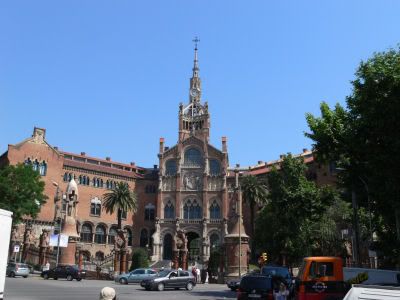
The main facade as you approach
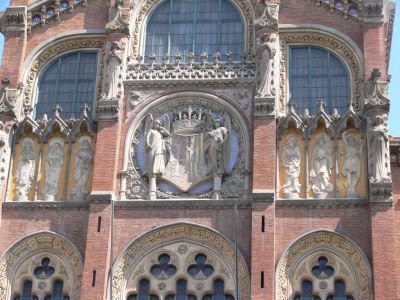
Close-up of the statue
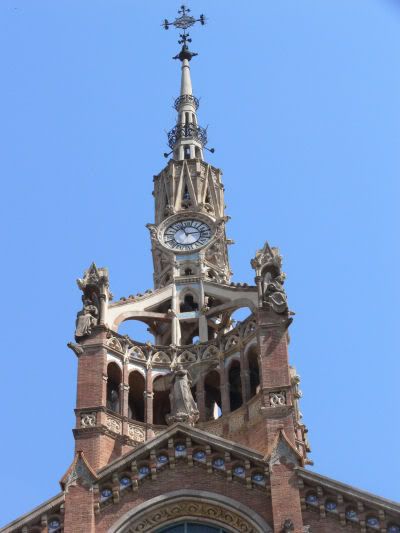
And the clocktower
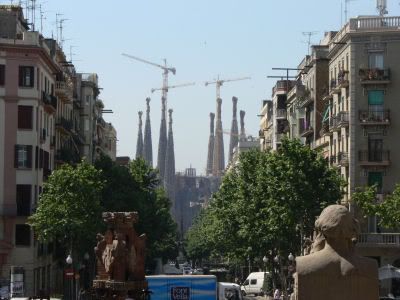
Where you can even catch a glimpse of the Sagrada Familia (see below)
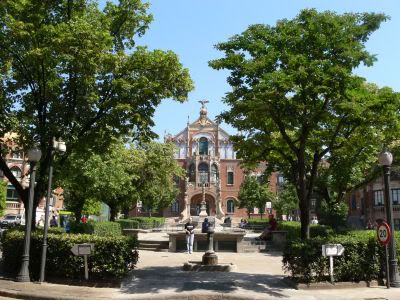
Can you believe this is a hospital?
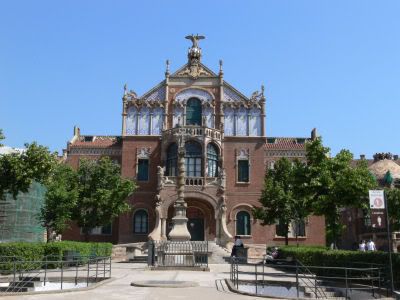
I honestly thought it was more of a castle
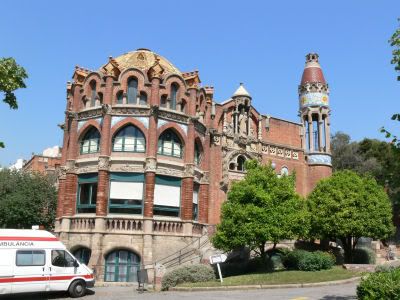
See that ambulance below? That's real
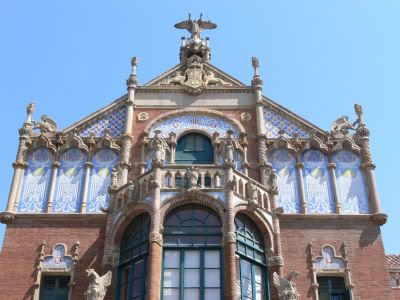
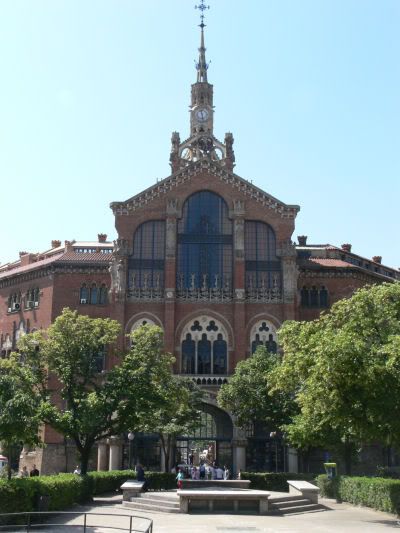
The other side of the main building
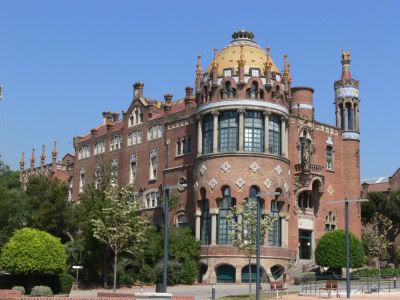
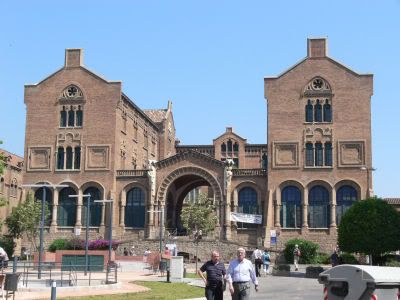
Ask yourself, would you like to stay here? I wouldn't mind
Photobucket: Hospital de Sant Pau
Antoni Gaudí
With regards to Barcelona, he is THE man. Antoni Gaudí (1852 - 1926) was an architect that designed many of Barcelona's iconic buildings with a very unique style that can only be attributed to him. His works have been categorised as Art Nouveau and has a blend of natural curves combined with lines.
Antoni Gaudí was an eccentric man in his later years, and was not even recognised by others when he was knocked down by a tram in 1926 because he dressed so sloppily, people were worried he couldn't pay the cab fare to the hospital. He died two days after the accident.
The Works of Antoni Gaudí are now preserved as United Nations World Heritage Sites.
Casa Terrades
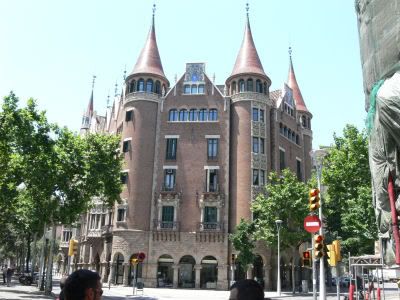
Casa Milà
The Casa Milà (also known as La Pedrera or "The Quarry") was designed by Gaudí and built from 1905 to 1907 and is located along Passeig de Gràcia.
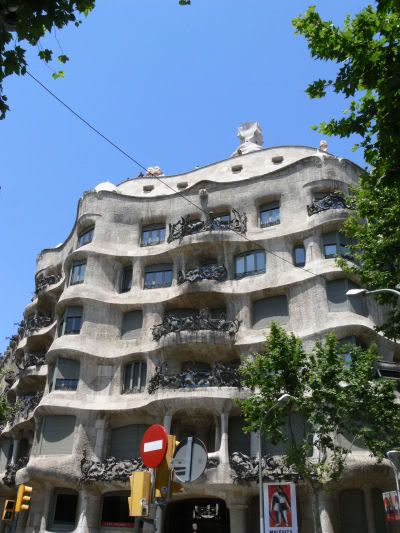

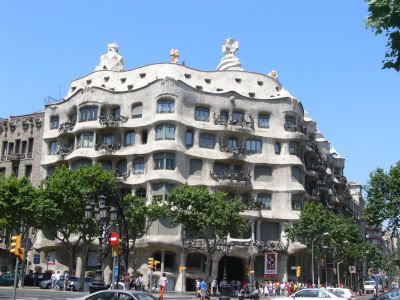
Park Güell
From Casa Milà, it was another Metro ride and a steep, long walk up to Park Güell. This is a garden complex situated on the El Carmel hill and built from 1900 to 1914.
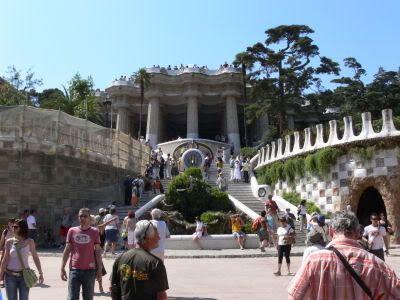
Walking through the entrance
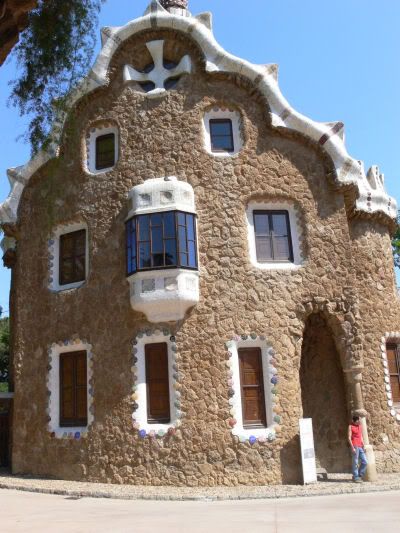
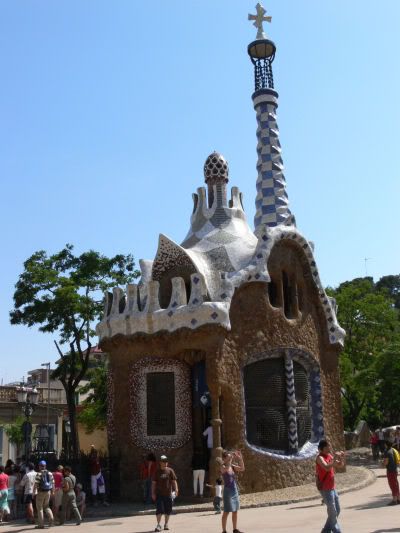
Reminds you of the gingerbread house, don't you think?
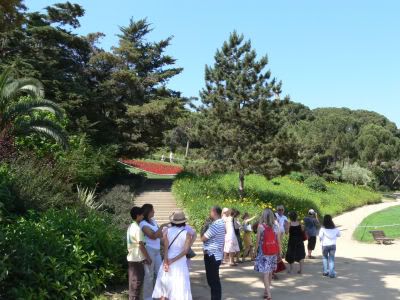
Leading up to the park on top
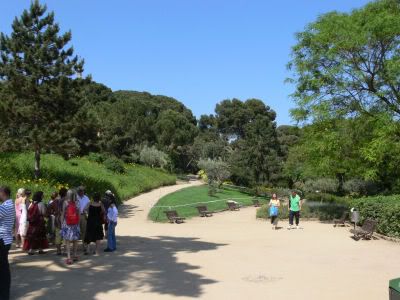
Which is beautiful, nonetheless
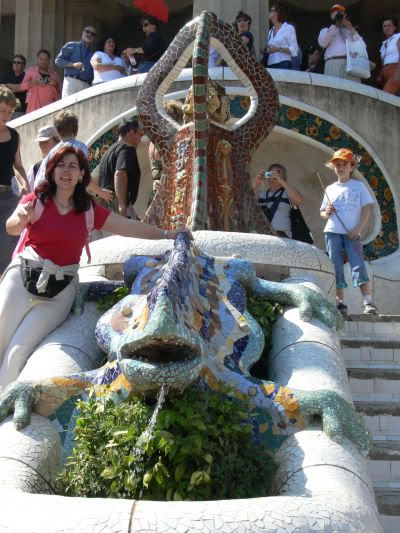
This is the famous iguana that everyone so desperately wants to take a photo of/with
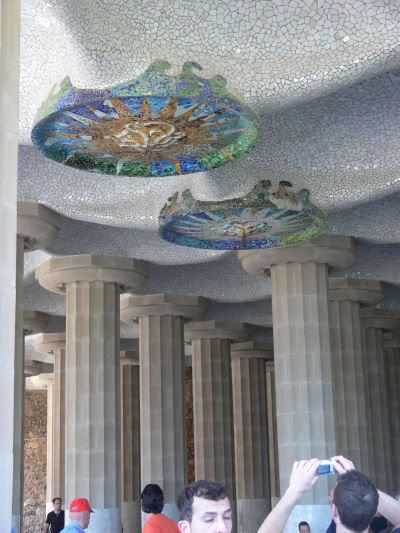
Underneath the terrace, the details are not omitted either
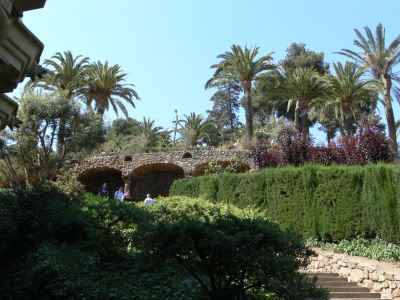
Climbing the stairs to the terrace. Don't you get this tropical feeling?
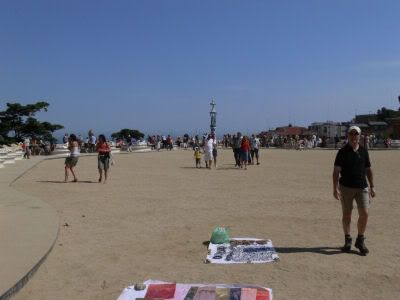
Top of the terrace to see... a beach?
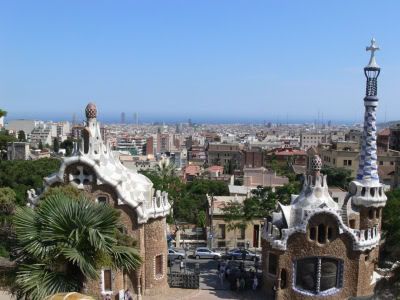
The "gingerbread houses"
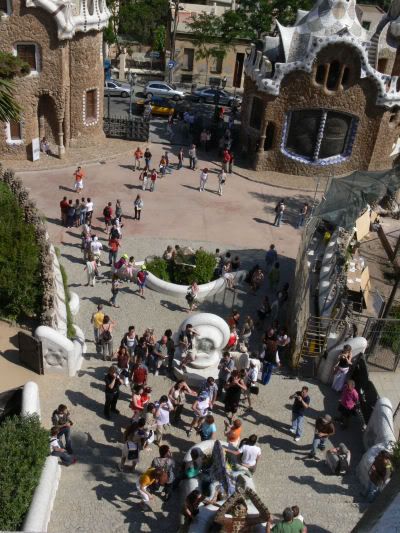
That's only about 3% of the crowd there
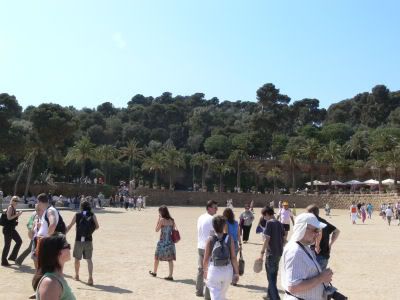
But I must say, "beach on top of hill" is indeed a good design concept
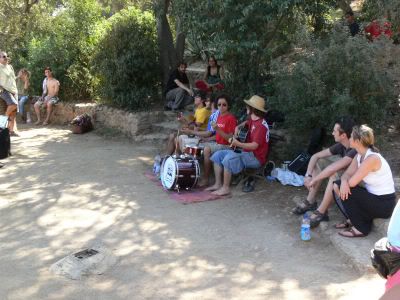
Many performers there as well
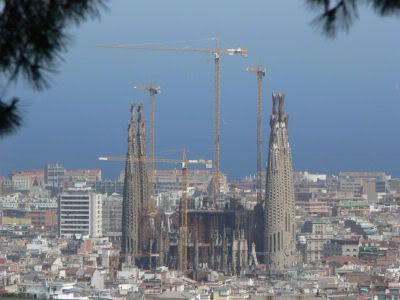
Climbing to the top offers a good view of the Sagrada Familia (see below)
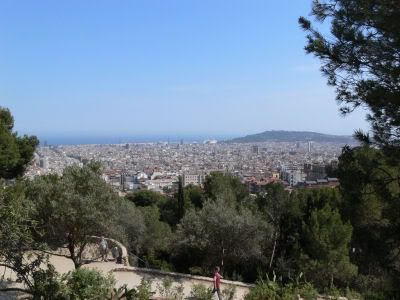
And the city, of course
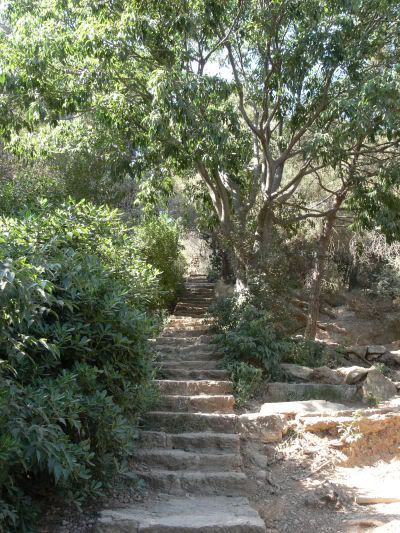
But no one said the climb up was fun
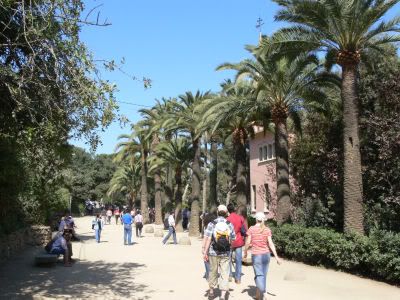
This is pleasant to walk though

Gaudí's house, now a museum
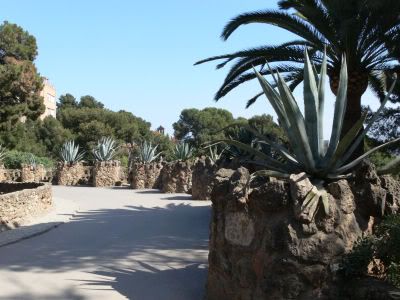
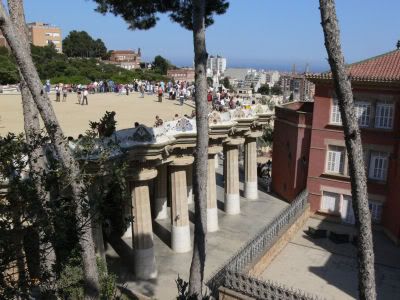
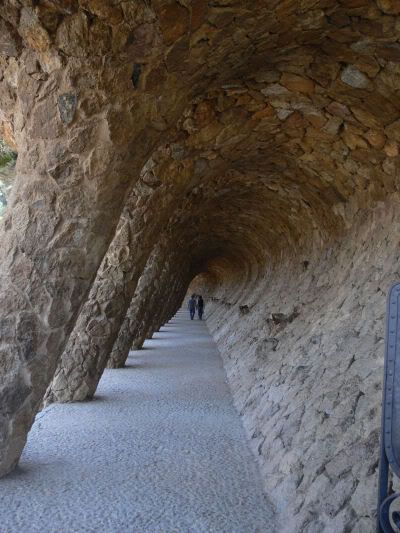
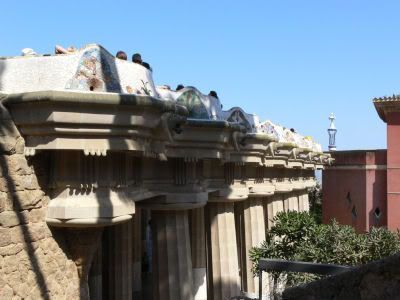
Beautiful, isn't it?
Sagrada Familia
The last and most famous of Antoni Gaudí's works: the Temple Expiatori de la Sagrada Família (translation from Catalonian: Expiatory Temple of the Holy Family). Gaudí worked on it in his last years from 1883 until the fatal tram accident in 1926. Work was interrupted in 1935 and resumed in the 1950s. Funded by the public and tourists, the basilica is still under construction today using modern methods and is slated for completion in 2026, the 100th anniversary of Gaudí's death. When completed, it will have 18 towers symbolising the 12 apostles, the 4 evangelists, the Virgin Mary and the tallest of all, in the middle, Jesus Christ. The tallest tower, when completed, will make the Sagrada Familia the tallest basilica in the world. As of now, 8 of the towers have been completed (4 on each side, 2 sides complete) and elevators have been built into the towers for tourists to go up to take a look. Seeing the extremely long queues, I passed.
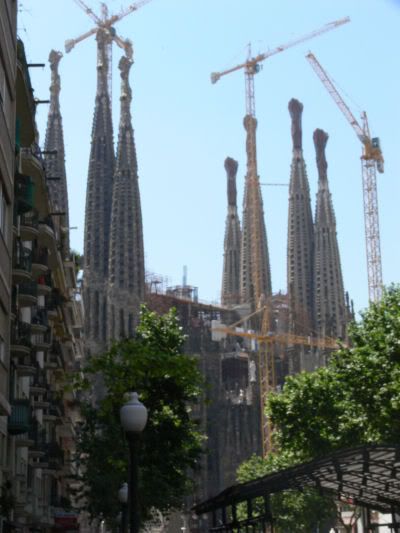
From afar
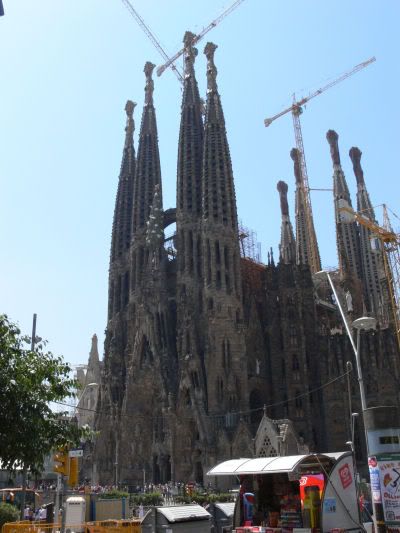
View from across the road
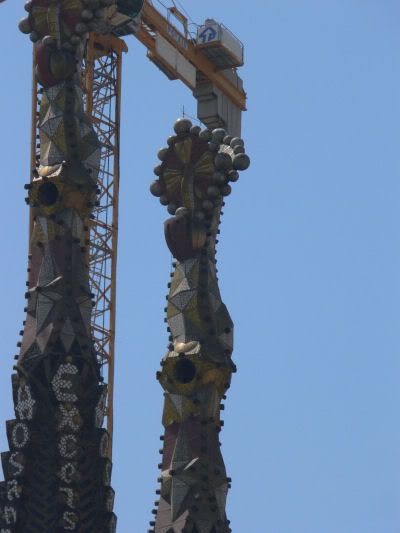
The cross on the spire
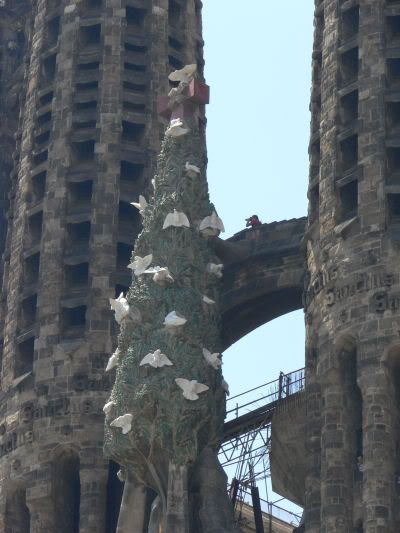
The Christmas Tree perched on top of 1 of the facades
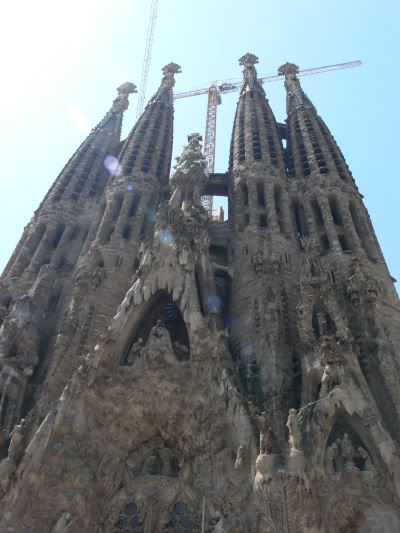
Well I admit, I think it looks a little like a haunted house
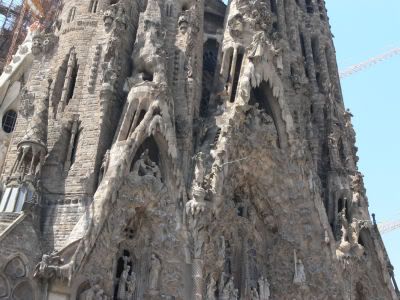
But the detail is fascinating
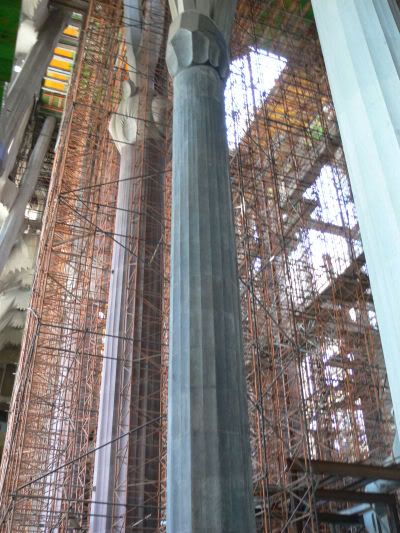
Inside the structure, still a Work-In-Progress as you can see
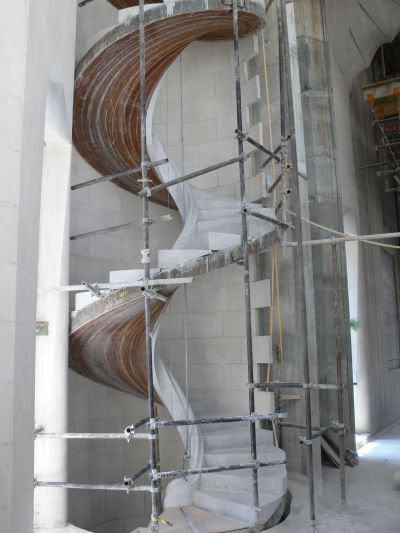
So this is how spiral staircases are built...
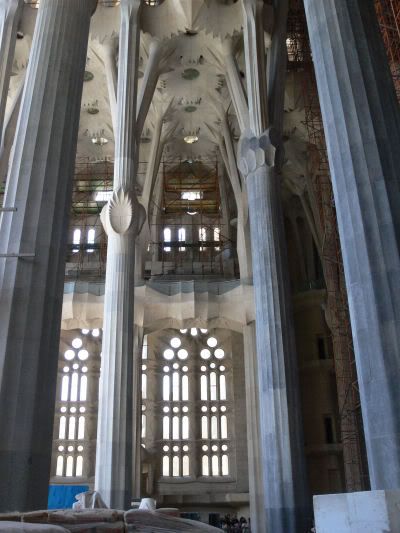
It looks grand already
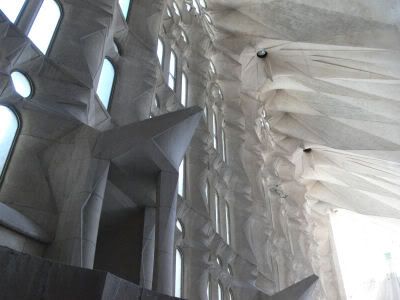
Yup, it's difficult to see which is up or down
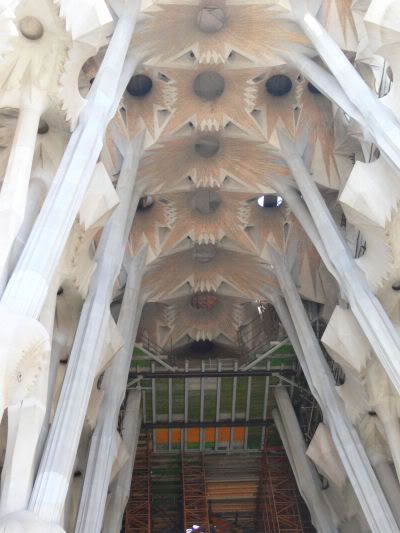
Definitely Gaudí
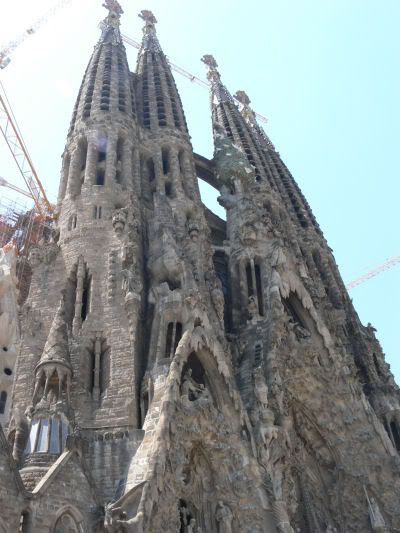
One last parting shot outside
Photobucket: Antoni Gaudí
Next morning, we're off again! First stop of the day was Hospital de la Santa Creu i de Sant Pau (Catalanian translation: Hospital of the Holy Cross and Saint Paul).
This hospital was built between 1901 and 1930 and is not only a UNESCO World Heritage Site, it is still an active hospital!

The main facade as you approach

Close-up of the statue

And the clocktower

Where you can even catch a glimpse of the Sagrada Familia (see below)

Can you believe this is a hospital?

I honestly thought it was more of a castle

See that ambulance below? That's real


The other side of the main building


Ask yourself, would you like to stay here? I wouldn't mind
Photobucket: Hospital de Sant Pau
Antoni Gaudí
With regards to Barcelona, he is THE man. Antoni Gaudí (1852 - 1926) was an architect that designed many of Barcelona's iconic buildings with a very unique style that can only be attributed to him. His works have been categorised as Art Nouveau and has a blend of natural curves combined with lines.
Antoni Gaudí was an eccentric man in his later years, and was not even recognised by others when he was knocked down by a tram in 1926 because he dressed so sloppily, people were worried he couldn't pay the cab fare to the hospital. He died two days after the accident.
The Works of Antoni Gaudí are now preserved as United Nations World Heritage Sites.
Casa Terrades

Casa Milà
The Casa Milà (also known as La Pedrera or "The Quarry") was designed by Gaudí and built from 1905 to 1907 and is located along Passeig de Gràcia.



Park Güell
From Casa Milà, it was another Metro ride and a steep, long walk up to Park Güell. This is a garden complex situated on the El Carmel hill and built from 1900 to 1914.

Walking through the entrance


Reminds you of the gingerbread house, don't you think?

Leading up to the park on top

Which is beautiful, nonetheless

This is the famous iguana that everyone so desperately wants to take a photo of/with

Underneath the terrace, the details are not omitted either

Climbing the stairs to the terrace. Don't you get this tropical feeling?

Top of the terrace to see... a beach?

The "gingerbread houses"

That's only about 3% of the crowd there

But I must say, "beach on top of hill" is indeed a good design concept

Many performers there as well

Climbing to the top offers a good view of the Sagrada Familia (see below)

And the city, of course

But no one said the climb up was fun

This is pleasant to walk though

Gaudí's house, now a museum




Beautiful, isn't it?
Sagrada Familia
The last and most famous of Antoni Gaudí's works: the Temple Expiatori de la Sagrada Família (translation from Catalonian: Expiatory Temple of the Holy Family). Gaudí worked on it in his last years from 1883 until the fatal tram accident in 1926. Work was interrupted in 1935 and resumed in the 1950s. Funded by the public and tourists, the basilica is still under construction today using modern methods and is slated for completion in 2026, the 100th anniversary of Gaudí's death. When completed, it will have 18 towers symbolising the 12 apostles, the 4 evangelists, the Virgin Mary and the tallest of all, in the middle, Jesus Christ. The tallest tower, when completed, will make the Sagrada Familia the tallest basilica in the world. As of now, 8 of the towers have been completed (4 on each side, 2 sides complete) and elevators have been built into the towers for tourists to go up to take a look. Seeing the extremely long queues, I passed.

From afar

View from across the road

The cross on the spire

The Christmas Tree perched on top of 1 of the facades

Well I admit, I think it looks a little like a haunted house

But the detail is fascinating

Inside the structure, still a Work-In-Progress as you can see

So this is how spiral staircases are built...

It looks grand already

Yup, it's difficult to see which is up or down

Definitely Gaudí

One last parting shot outside
Photobucket: Antoni Gaudí

0 Comments:
Post a Comment
<< Home